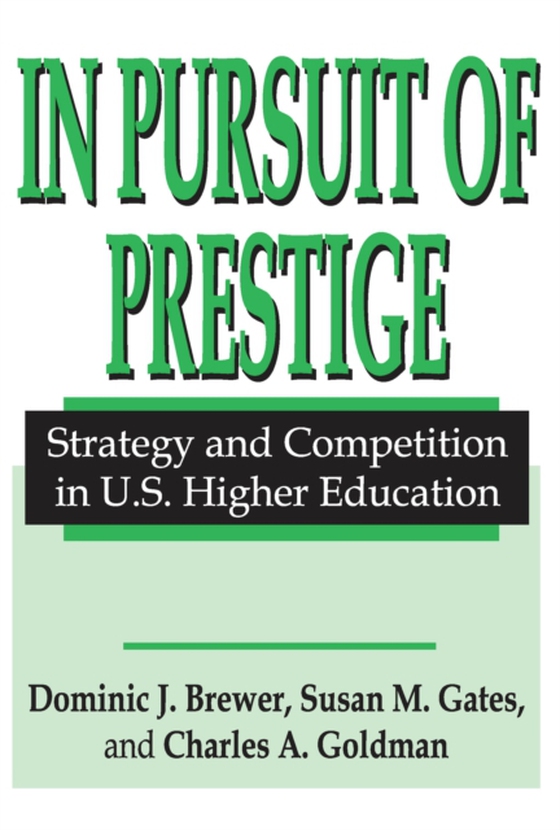
In Pursuit of Prestige e-bog
504,55 DKK
(ekskl. moms 403,64 DKK)
By almost any measure, higher education is a vital part of the U.S. economy and society. Yet there is concern that the sector is inefficient or ill equipped to adapt to a changing environment. The information revolution, an aging population, demographic shifts, and a declining fiscal base all present it with major challenges.In Pursuit of Prestige describes the results of a two-year study of hi...
E-bog
504,55 DKK
Forlag
Routledge
Udgivet
4 september 2017
Længde
175 sider
Genrer
Education
Sprog
English
Format
pdf
Beskyttelse
LCP
ISBN
9781351513043
By almost any measure, higher education is a vital part of the U.S. economy and society. Yet there is concern that the sector is inefficient or ill equipped to adapt to a changing environment. The information revolution, an aging population, demographic shifts, and a declining fiscal base all present it with major challenges.In Pursuit of Prestige describes the results of a two-year study of higher education in the United States designed to shed light on these issues. This volume examines higher education as an industry. It focuses on how institutions serve four identifiable markets that generate revenues (student enrollment, research funding, public fiscal support, and private giving). They analyze higher educational institutions' investment, pricing, and marketing behaviors, and the nature of competition among schools. They review the industry's basic conditions and market structure, then define the three key dimensions--degree level, scope, and resource allocation--by which institutions map out strategies for competing for markets.The heart of the book is an analysis showing how these strategies are carried out based on site-visit data from 26 highly diverse colleges and universities. This broad sampling covers all geographic regions of the country and every type of institution from elite research universities to community colleges. The authors then consider what strategies are possible in particular markets and how they affect students and competing institutions. Their conclusion draws out the implications of strategy and competition for the various customers of the U.S. higher education industry. Groundbreaking and genuinely exploratory in methodology.
 Dansk
Dansk

